| Weight | 1 lbs |
|---|---|
| Dimensions | 9 × 5 × 2 in |
| host | mouse |
| isotype | IgG1 |
| clonality | monoclonal |
| concentration | 1 mg/mL |
| applications | ICC/IF, WB |
| reactivity | Rad50 |
| available sizes | 100 µg |
mouse anti-Rad50 monoclonal antibody (2C6) 6741
$503.00
Antibody summary
- Mouse monoclonal to Rad50
- Suitable for: WB,ICC/IF,IHC-P,IP,IHC,in vitro
- Isotype: IgG1
- 100 µg
mouse anti-Rad50 monoclonal antibody (2C6) 6741
| antibody |
|---|
| Tested applications WB,IHC,IHC,ICC/IF |
| Recommended dilutions Immunoblotting, Immunoprecipitation: use at 0.1-2 ug/mL. Positive control: Raji cells. |
| Immunogen GST fusion protein corresponding to the complete coding region (aa 1-425) of Rad50 expressed in E. coli. |
| Size and concentration 100µg and lot specific |
| Form liquid |
| Storage Instructions This antibody is stable for at least one (1) year at -70°C. Avoid multiple freeze- thaw cycles. |
| Storage buffer PBS, pH 7.4 |
| Purity protein affinity purification |
| Clonality monoclonal |
| Isotype IgG1 |
| Compatible secondaries goat anti-mouse IgG, H&L chain specific, peroxidase conjugated polyclonal antibody 5486 goat anti-mouse IgG, H&L chain specific, biotin conjugated, Conjugate polyclonal antibody 2685 goat anti-mouse IgG, H&L chain specific, FITC conjugated polyclonal antibody 7854 goat anti-mouse IgG, H&L chain specific, peroxidase conjugated polyclonal antibody, crossabsorbed 1706 goat anti-mouse IgG, H&L chain specific, biotin conjugated polyclonal antibody, crossabsorbed 1716 goat anti-mouse IgG, H&L chain specific, FITC conjugated polyclonal antibody, crossabsorbed 1721 |
| Isotype control Mouse monocolonal IgG1 - Isotype Control |
| target relevance |
|---|
| Protein names DNA repair protein RAD50 (hRAD50) (EC 3.6.-.-) |
| Gene names RAD50,RAD50 |
| Protein family SMC family, RAD50 subfamily |
| Mass 153892Da |
| Function FUNCTION: Component of the MRN complex, which plays a central role in double-strand break (DSB) repair, DNA recombination, maintenance of telomere integrity and meiosis (PubMed:15064416, PubMed:21757780, PubMed:27889449, PubMed:28134932, PubMed:28867292, PubMed:9590181, PubMed:9651580, PubMed:9705271). The MRN complex is involved in the repair of DNA double-strand breaks (DSBs) via homologous recombination (HR), an error-free mechanism which primarily occurs during S and G2 phases (PubMed:15064416, PubMed:21757780, PubMed:27889449, PubMed:28867292, PubMed:9590181, PubMed:9651580, PubMed:9705271). The complex (1) mediates the end resection of damaged DNA, which generates proper single-stranded DNA, a key initial steps in HR, and is (2) required for the recruitment of other repair factors and efficient activation of ATM and ATR upon DNA damage (PubMed:15064416, PubMed:27889449, PubMed:28867292, PubMed:9590181, PubMed:9651580, PubMed:9705271). The MRN complex possesses single-strand endonuclease activity and double-strand-specific 3'-5' exonuclease activity, which are provided by MRE11, to initiate end resection, which is required for single-strand invasion and recombination (PubMed:11741547, PubMed:9590181, PubMed:9651580, PubMed:9705271). Within the complex, RAD50 is both required to bind DNA ends and hold them in close proximity and regulate the activity of MRE11 (PubMed:11741547, PubMed:12805565, PubMed:28134932). RAD50 provides an ATP-dependent control of MRE11 by positioning DNA ends into the MRE11 active site: ATP-binding induces a large structural change from an open form with accessible MRE11 nuclease sites into a closed form (By similarity). The MRN complex is also required for DNA damage signaling via activation of the ATM and ATR kinases: the nuclease activity of MRE11 is not required to activate ATM and ATR (PubMed:15064416, PubMed:15790808, PubMed:16622404). The MRN complex is also required for the processing of R-loops (PubMed:31537797). In telomeres the MRN complex may modulate t-loop formation (PubMed:10888888). {ECO:0000250|UniProtKB:Q9X1X1, ECO:0000269|PubMed:10888888, ECO:0000269|PubMed:11741547, ECO:0000269|PubMed:12805565, ECO:0000269|PubMed:15064416, ECO:0000269|PubMed:15790808, ECO:0000269|PubMed:16622404, ECO:0000269|PubMed:21757780, ECO:0000269|PubMed:27889449, ECO:0000269|PubMed:28134932, ECO:0000269|PubMed:28867292, ECO:0000269|PubMed:31537797, ECO:0000269|PubMed:9590181, ECO:0000269|PubMed:9651580, ECO:0000269|PubMed:9705271}. |
| Catalytic activity CATALYTIC ACTIVITY: Reaction=ATP + H2O = ADP + phosphate + H(+); Xref=Rhea:RHEA:13065, ChEBI:CHEBI:15377, ChEBI:CHEBI:15378, ChEBI:CHEBI:30616, ChEBI:CHEBI:43474, ChEBI:CHEBI:456216; Evidence={ECO:0000269|PubMed:27889449, ECO:0000269|PubMed:9651580, ECO:0000305|PubMed:15790808}; |
| Subellular location SUBCELLULAR LOCATION: Nucleus {ECO:0000269|PubMed:10783165, ECO:0000269|PubMed:15916964, ECO:0000269|PubMed:26215093}. Chromosome, telomere {ECO:0000269|PubMed:10888888}. Chromosome {ECO:0000269|PubMed:21757780, ECO:0000269|PubMed:26215093}. Note=Localizes to discrete nuclear foci after treatment with genotoxic agents (PubMed:10783165, PubMed:26215093). Localizes to DNA double-strand breaks (DSBs) (PubMed:15916964, PubMed:21757780). {ECO:0000269|PubMed:10783165, ECO:0000269|PubMed:15916964, ECO:0000269|PubMed:21757780, ECO:0000269|PubMed:26215093}. |
| Tissues TISSUE SPECIFICITY: Expressed at very low level in most tissues, except in testis where it is expressed at higher level. Expressed in fibroblasts. {ECO:0000269|PubMed:8756642}. |
| Structure SUBUNIT: Component of the MRN complex composed of two heterodimers RAD50 and MRE11 associated with a single NBN (PubMed:10839544, PubMed:26215093, PubMed:28867292, PubMed:36577401, PubMed:8756642, PubMed:9590181, PubMed:9705271). The MRN complexes dimerize on DNA to form joined MRN-MRN oligomers required for DNA double-strand break repair (PubMed:36577401). As part of the MRN complex, interacts with MCM8 and MCM9; the interaction recruits the complex to DNA repair sites (PubMed:26215093). Component of the BASC complex, at least composed of BRCA1, MSH2, MSH6, MLH1, ATM, BLM, RAD50, MRE11 and NBN (PubMed:10783165). Found in a complex with TERF2 (PubMed:10888888). Interacts with RINT1 (PubMed:11096100). Interacts with BRCA1 via its N-terminal domain (PubMed:10426999). Interacts with DCLRE1C/Artemis (PubMed:15456891, PubMed:15723659). Interacts with MRNIP (PubMed:27568553). Interacts with CYREN (via XLF motif) (By similarity). Interacts with C1QBP and MRE11; interaction takes place in absence of DNA damage to form the MRC (MRE11-RAD50-C1QBP) complex that inhibits the activity of MRE11 (PubMed:31353207). {ECO:0000250|UniProtKB:P70388, ECO:0000269|PubMed:10426999, ECO:0000269|PubMed:10783165, ECO:0000269|PubMed:10839544, ECO:0000269|PubMed:10888888, ECO:0000269|PubMed:11096100, ECO:0000269|PubMed:15456891, ECO:0000269|PubMed:15723659, ECO:0000269|PubMed:26215093, ECO:0000269|PubMed:27568553, ECO:0000269|PubMed:28867292, ECO:0000269|PubMed:31353207, ECO:0000269|PubMed:36577401, ECO:0000269|PubMed:8756642, ECO:0000269|PubMed:9590181, ECO:0000269|PubMed:9705271}.; SUBUNIT: (Microbial infection) Interacts with herpes simplex virus 1 protein UL12 (PubMed:20943970). {ECO:0000269|PubMed:20943970}. |
| Post-translational modification PTM: Phosphorylation at Ser-635 by ATM in response to DNA damage is required for double-strand break (DSB) repair. {ECO:0000269|PubMed:21757780}. |
| Domain DOMAIN: The zinc-hook, which separates the large intramolecular coiled coil regions, contains 2 Cys residues that coordinate one molecule of zinc with the help of the 2 Cys residues of the zinc-hook of another RAD50 molecule, thereby forming a V-shaped homodimer. The two heads of the homodimer, which constitute the ATP-binding domain, interact with the MRE11 homodimer. {ECO:0000250|UniProtKB:P58301}. |
| Involvement in disease DISEASE: Nijmegen breakage syndrome-like disorder (NBSLD) [MIM:613078]: A disorder similar to Nijmegen breakage syndrome and characterized by chromosomal instability, radiation sensitivity, microcephaly, growth retardation, short stature and bird-like face. Immunodeficiency is absent. {ECO:0000269|PubMed:19409520, ECO:0000269|PubMed:32212377}. Note=The disease is caused by variants affecting the gene represented in this entry. |
| Target Relevance information above includes information from UniProt accession: Q92878 |
| The UniProt Consortium |
Data
Publications
| pmid | title | authors | citation |
|---|---|---|---|
| We haven't added any publications to our database yet. | |||
Protocols
| relevant to this product |
|---|
| Western blot IHC ICC |
Documents
| # | SDS | Certificate | |
|---|---|---|---|
| Please enter your product and batch number here to retrieve product datasheet, SDS, and QC information. | |||
Only logged in customers who have purchased this product may leave a review.




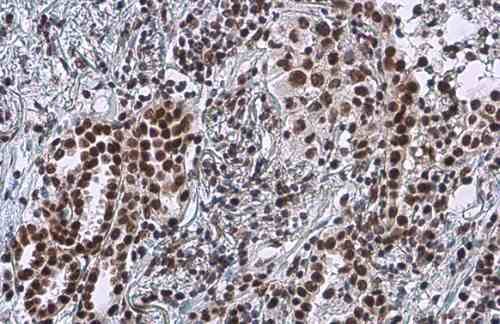

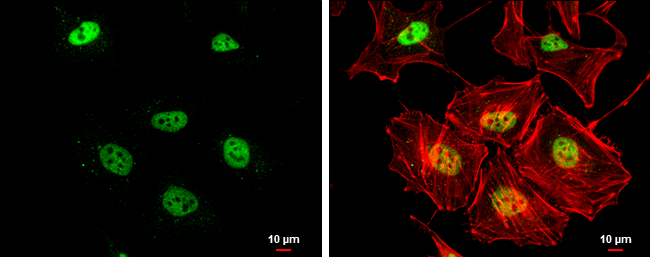
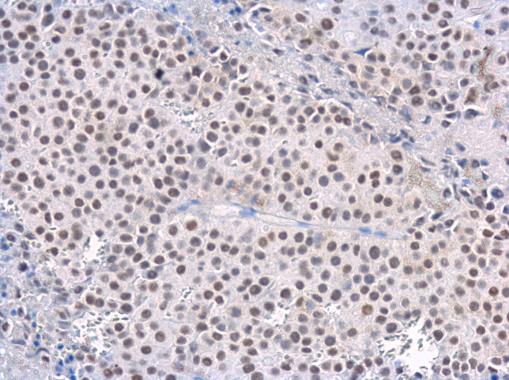
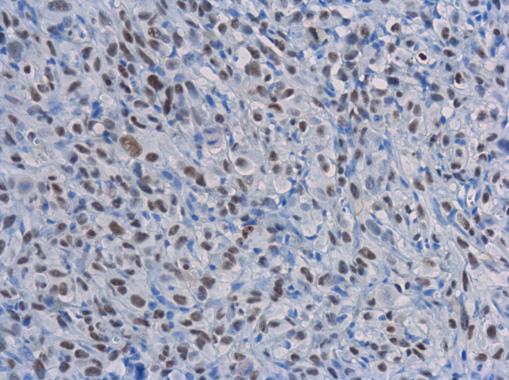

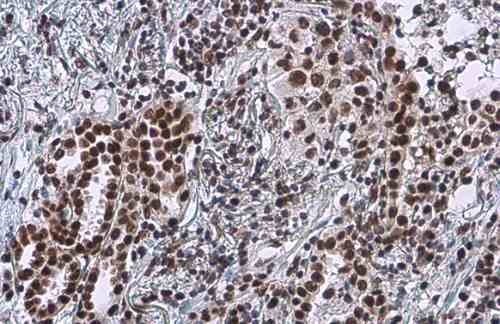








Reviews
There are no reviews yet.